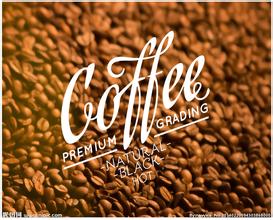Description of characteristics and Flavor of Coffee beans in Latin America Variety Grinding scale Manor
Description of characteristics and Flavor of Coffee beans in Latin America Variety Grinding scale Manor
Guatemala (Guatemala) aroma 3.5 minutes brightness 4.5 minutes mellow 3.5 minutes flavor 4.5 points aftertaste 4.5 points
Suitable for baking: Light/Medial/City shallow roasting, city can best show the characteristics of Guatemalan coffee, too deep will reduce the fragrance of the fruit, if you like the smoky taste, you can bake close to the second burst, but still do not enter the second burst as the principle.
As the United States is deeply involved in coffee agriculture and is heavily exploited, huge North American multinational groups control most of the producing areas and produce low-altitude, low-quality coffee at very low wages. These shoddy coffees don't represent real Guatemalan coffee. In fact, Guatemala has unique planting conditions, and many producing areas have ideal altitude, soil and climate conditions, so they can produce the most complex and delicate coffee in the world. The most famous is Antigua in the volcanic area, where coffee is famous for its smoky taste and the performance of spices and fruit acids is not poor. Huehuetenango in the north is more fruity, but slightly lighter than Antigua. In addition, coffees such as Kovan, Frejanis and Kitcher also have their own characteristics, and coffee from Atitland has occasionally been produced in recent years.
El Salvador (El Salvador) aroma 4 minutes brightness 4.5 minutes mellow 3 minutes flavor 4.5 points aftertaste 4.5 points
Suitable for baking: if City/Full city city has a preference for heavy flavor, it doesn't hurt to bake it a little deeper.
Most people remember El Salvador as a place with frequent wars, but it is true that years of civil war have prevented El Salvador's coffee beans from standing out in the international market. in fact, El Salvador has three conditions: soil, height and climate. It should not be difficult to produce coffee as spectacular as Guatemala and Costa Rica, and coffee could be grown in El Salvador as early as the 19th century. It was once even the most important cash crop in the country. In recent years, El Salvador has a stable political situation and an open market economy, so its coffee beans have gradually come to the fore in the international market. Most of the Salvadoran coffee is certified organic coffee, the taste is fresh and bright, the fruit flavor is also rich, the flavor is slightly thicker than the beans of neighboring countries, the overall pull is quite good, I believe that it will be better and better in the future.
Panama (Panama) aroma 3.5 minutes brightness 4.5 minutes mellow 3.5 minutes flavor 4.5 points aftertaste 4.5 points
Suitable for baking: Light/Medial/City shallow to medium baking, shallow to the end of the first explosion; do not enter the second explosion at the deepest, otherwise it will damage its clean brightness and reduce its complexity.
Coffee dealers often joke: "good Hawaiian beans are actually Panamanian beans, good Jamaican blue beans are Panamanian beans, and good Costa Rican beans are actually Panamanian beans." Although it is a joke, what is revealed is the high praise of Panamanian beans in the boutique coffee world! Panamanian coffee beans are cheap, high-quality and stable, and often easily surpass other famous coffee beans, which is why many Panamanian beans are passed off as other high-priced beans. High-end Panamanian coffee beans have a complex and pure flavor, with just the right mellow and bright taste, it is not too much to call it the most valuable coffee. Panamanian coffee is grown at a high altitude, and many famous estates are operated for generations, with a long tradition and rich experience, so the coffee produced is naturally of high quality.

Important Notice :
前街咖啡 FrontStreet Coffee has moved to new addredd:
FrontStreet Coffee Address: 315,Donghua East Road,GuangZhou
Tel:020 38364473
- Prev

Introduction to the variety of Katim coffee beans suitable for which baking degree and flavor description method
What kind of baking degree is suitable for katim coffee beans? Typica: the oldest native variety in Ethiopia and southeastern Sudan, all Arabica are derived from Tibica. The flavor is elegant, but the physique is weak, the disease resistance is poor, the fruit yield is less. Jamaica Blue Mountain, Sumatra Manning, Hawaii Kona, etc.
- Next

Costa Rican Tara Beads with Small Particles Flavor Description Grind Scale Variety Region of Origin
Costa Rica Tara Beads Coffee Bean Flavor Description Grind Scale Variety Production Area Treatment Introduction Tara Beads Coffee beans are blue-green in color, with the characteristics of extremely hard beans, round beans, small particles, slightly poor uniformity, fully washed, variety for Costa Rica's Cadura, in order to highlight its refreshing and clean taste, we use light to moderate roasting. cup test baked
Related
- Detailed explanation of Jadeite planting Land in Panamanian Jadeite Manor introduction to the grading system of Jadeite competitive bidding, Red bid, Green bid and Rose Summer
- Story of Coffee planting in Brenka region of Costa Rica Stonehenge Manor anaerobic heavy honey treatment of flavor mouth
- What's on the barrel of Blue Mountain Coffee beans?
- Can American coffee also pull flowers? How to use hot American style to pull out a good-looking pattern?
- Can you make a cold extract with coffee beans? What is the right proportion for cold-extracted coffee formula?
- Indonesian PWN Gold Mandrine Coffee Origin Features Flavor How to Chong? Mandolin coffee is American.
- A brief introduction to the flavor characteristics of Brazilian yellow bourbon coffee beans
- What is the effect of different water quality on the flavor of cold-extracted coffee? What kind of water is best for brewing coffee?
- Why do you think of Rose Summer whenever you mention Panamanian coffee?
- Introduction to the characteristics of authentic blue mountain coffee bean producing areas? What is the CIB Coffee Authority in Jamaica?

